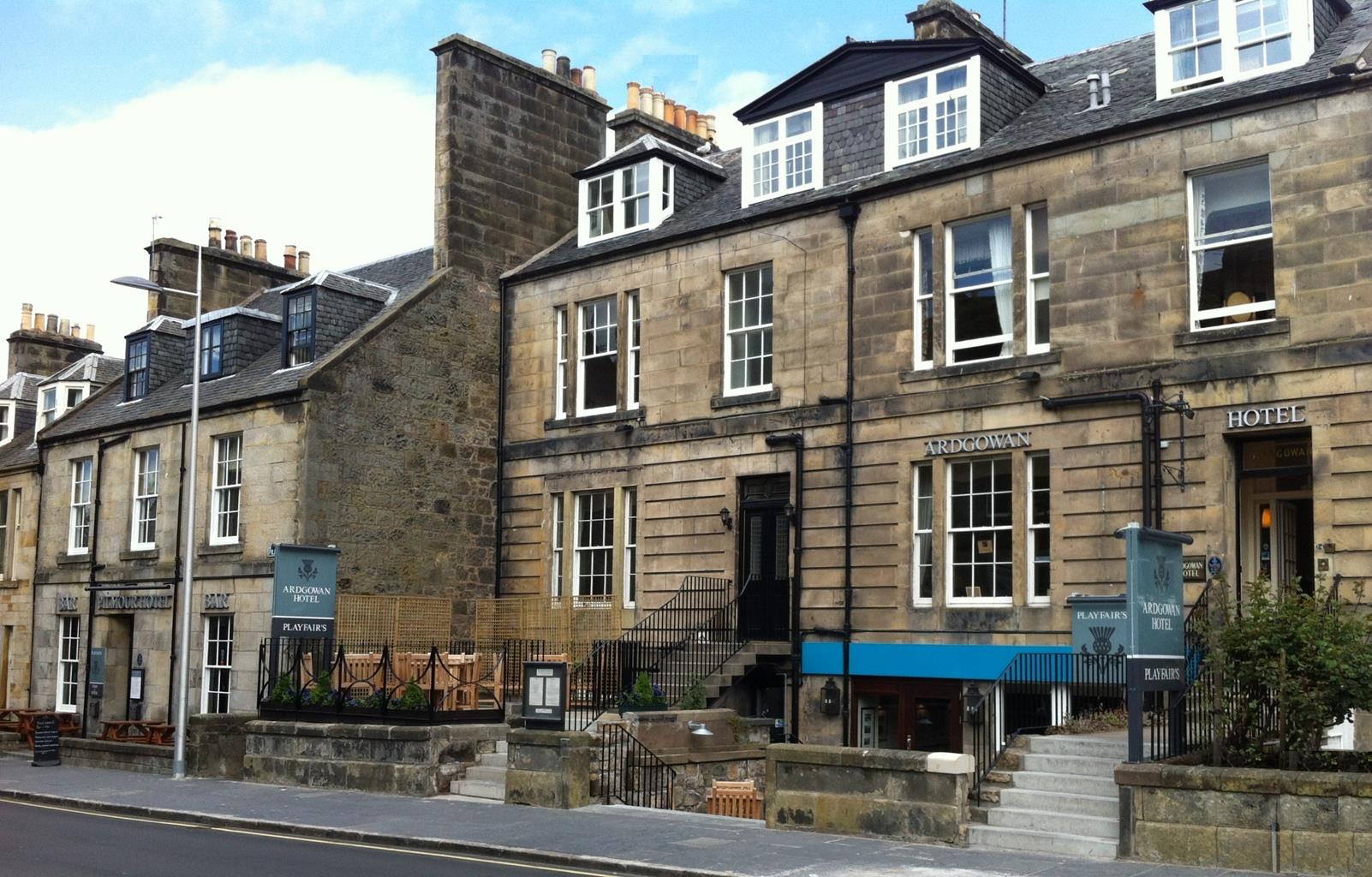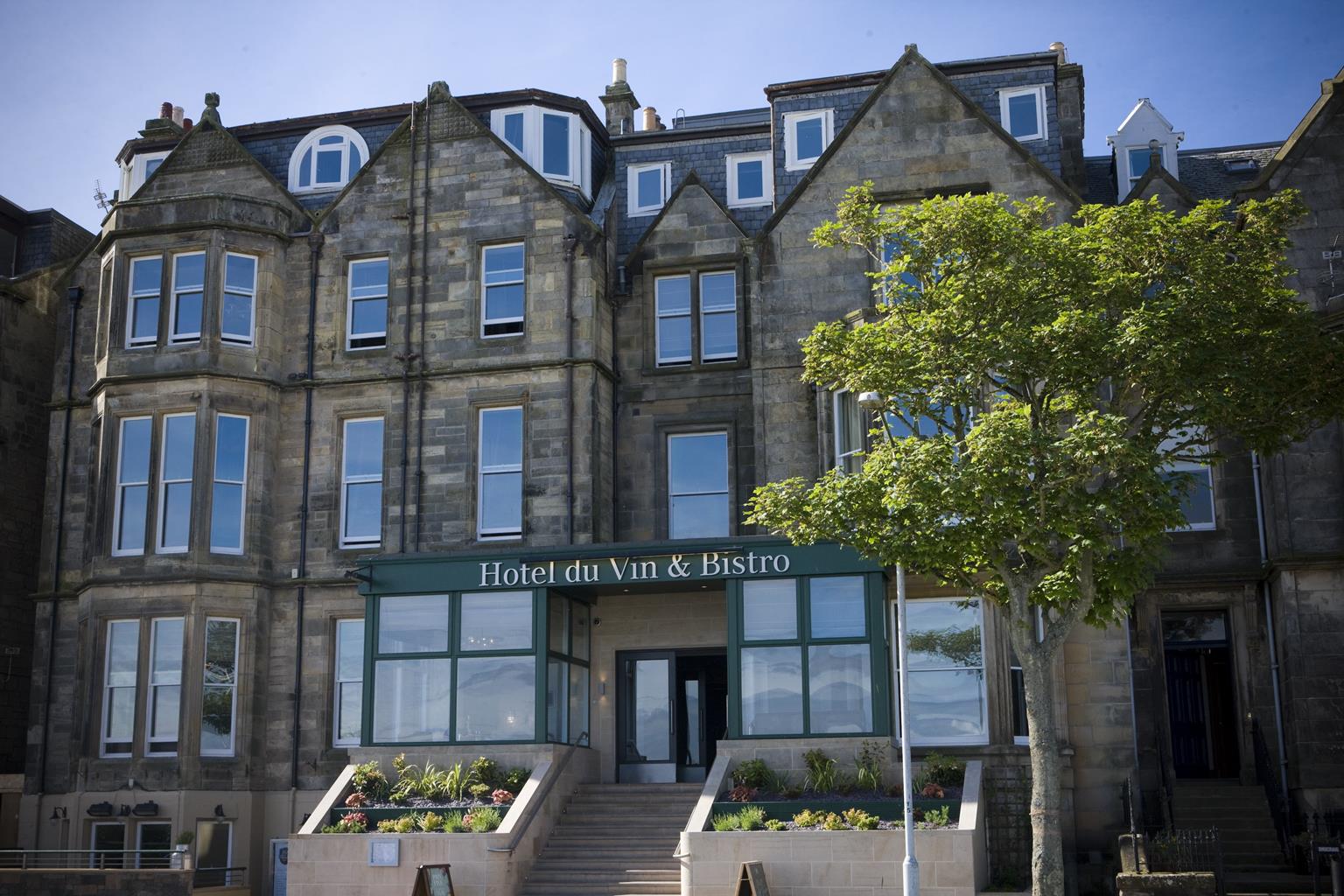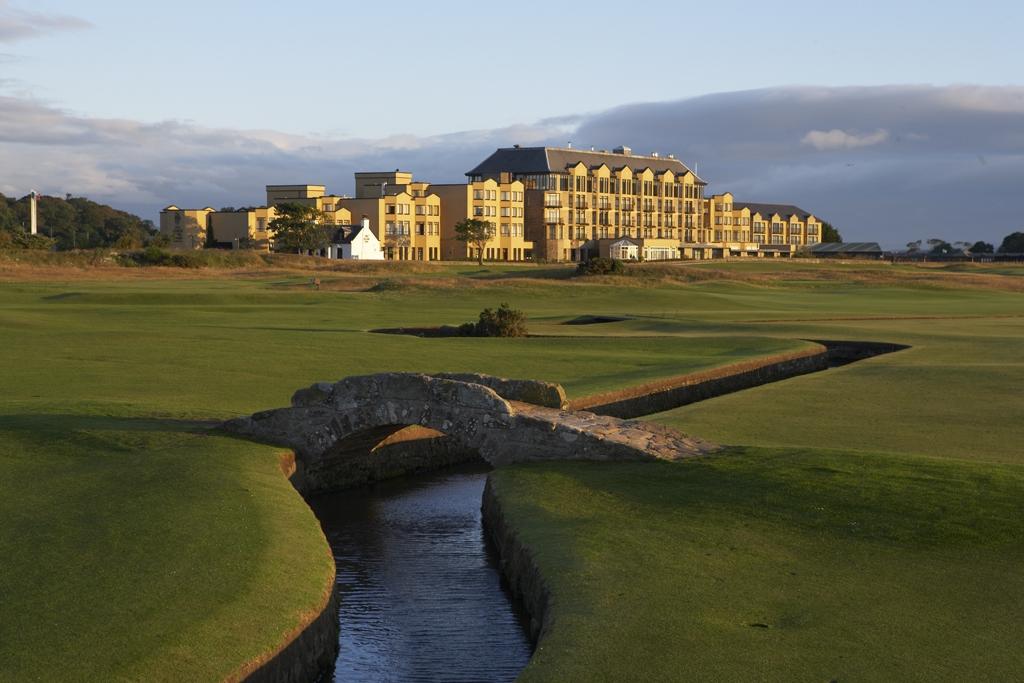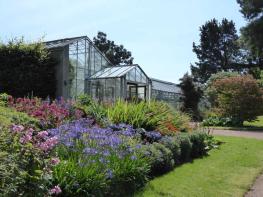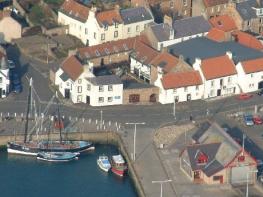The Ardgowan Hotel is ideally located just 200 yards from the Old Course Club House; the…
Fife Coastal Path: St Andrews to Crail

A shoreline of strange sea-stacks
13.7 miles (22kms)
About the walk
St Andrew, one of the original twelve apostles, travelled to Fife in the 1st century AD – so the legend says. Accordingly, the cathedral, founded in 1160, and its city were long the religious heart of Scotland. Protestant churchman Patrick Hamilton was executed by burning at St Andrews in 1528; his initials are set in the paving outside St Salvator's Chapel, where he died. But the Establishment didn't have everything its own way. In 1559 the cathedral was sacked by Presbyterian zealots, followers of John Knox, and has stood in ruins ever since.
St Andrews is still a typical old Scottish burgh, with narrow wynds, courtyards and closes. The town has grown substantially and is now a major holiday and golfing centre as well as the home of Scotland’s oldest university, founded in 1410 by the Augustinian priors at the cathedral. The town's West Sands stretch north for nearly 3 miles (5km) from the Old Course to Out Head on the Eden Estuary, a noted bird reserve. The East Sands are only slightly smaller.
Links with the Past
Golf (or 'gouf') is first recorded in 1457, when King James II attempted to ban the game because it interfered with archery practice. Mary, Queen of Scots was an early player. Up and down the Fife coast, the 'links' or sand-dune grasslands are ideal ground for this ancient Scottish game – the bunkers found on every golfing fairway are artificial reconstructions of Fife's sand dunes.
The Royal and Ancient Golf Club was founded at St Andrews in 1754. The 18 holes of the modern course derive from the layout of the Old Course at St Andrews, as standardised ten years later.
Maiden, spindle and sea cave
The coastline is a mix of hard, black volcanic lava with pale brown sandstone, giving a variety of weirdly shaped sea stacks. The Coast Path passes just out of sight of the Maiden Rock, but the Rock and Spindle sea stack is impossible to miss. The tall, slender pinnacle is supported by a cartwheel of basalt columns: the same formation as the Giant's Causeway in Northern Ireland or Fingal's Cave off Mull, but here splayed apart into a rosette. Further down the coast, Buddo Rock is sandstone eroded into hollows and an arch, but standing slightly above today's high tide mark. The waves that shaped it landed on a slightly higher shoreline, at a time when Scotland was still weighed down with ice.
Walk directions
Pass to right of the cathedral on a lane under two stone arches. A footbridge behind the harbour leads to a tarmac path along the East Sands. The path climbs to the cliff-top below caravans. In open ground, the main path forks up right, along the top of the sea slope (smaller, lower paths give views of Maiden Rock sea stack). After 1 mile (1.5km) the path drops to the shoreline, soon to pass the tall, slender rock pillar called the Rock and Spindle.
The path reverts to the cliff-top then drops again to pass the deep, overgrown Kittock’s Den. It continues up-and-down along the steep slope, with a section below small cliffs where you clamber over a boulder or two. (At extreme high tide this section is impassible.) This foreshore section is where you might spot shelly fossils here and there in beach stones. It leads to the eroded natural arch of Buddo Rock, which is an extraordinary formation.
As the path regains the clifftop, turn inland towards Boarhills and turn left before the village across to Burnside Farm. Turn right before the farm to cross Kenly Water, turning down the burn through woods back to the coast.
The coastal path continues past an old salmon-fishing bothy, to the long sandy beach of Airbow Point. At its end a branch path is signed as the alternative route through Kingsbarns. The main path continues between sea and golf course to the car park and picnic site near Kingsbarns.
Beyond Kingsbarns the path is more developed, as it passes through part of Cambo Estate, with a tea room a little way in from the coast. Cambo is famous for snowdrops and has a variety of walks and accommodation. The Coastal Path passes through the end of its woods (here the alternative through Kingsbarns rejoins), then takes to the foreshore past yet another golf course. In another 1 mile (1.5km), the path again takes to the foreshore below a low cliff, and may briefly be covered at the highest tides.
Beyond Balcomie golf course, you pass Constantine's Cave, where King Constantine met his death after losing a battle to the Danes in AD881. Now Fife Ness is rounded, the turning point from the North Sea into the broad Firth of Forth. After passing through a nature reserve the walk continues below the former Royal Naval air station, called HMS Jackdaw during World War II.
The path passes through a caravan village to enter the beautiful fishing village of Crail. Dip below a white windmill tower, then head up to Castle Walk below a stone turret. Keep ahead down to Crail's small and unbelievably picturesque harbour.
Additional information
In places narrow and quite rugged, with some stretches of foreshore sand and pebbles, 4 stiles
Remote coast with low cliffs and some striking sea stacks
On lead if passing livestock
OS Explorer 371 St Andrews
Pay-and-display St Andrews town and beaches; Kingsbarns shore; street parking Crail (away from the harbour)
St Andrews town centre and East Sands; Crail harbour and main street
<p>Buses can be caught back to St Andrews from Crail via Cambo, Kingsbarns and Boarhills.</p> <p>At a couple of points the path is below the very highest tides. Wait for an hour or two, or use Scottish access rights to pass along clifftop fields above.</p>
WALKING IN SAFETY
Read our tips to look after yourself and the environment when following this walk.
Find out more
Also in the area
About the area
Discover Fife
This 20-mile wide peninsula between the Firth of Forth and the Firth of Tay is an ancient kingdom, once the home of Scotland’s kings and saints. Despite its modern bridges it still seems curiously detached from the rest of the country. Travelling along Fife’s grand coastline reveals a fascinating legacy of caves, castles, and ancient fishing ports. Blend coast and countryside by following stretches of the Fife Coastal Path, or take an exhilarating trek in the Fife Regional Park.
St Andrews has a unique place in Scotland’s heritage. According to legend, the city was founded by St Regulus in the 4th century, who was carrying relics of St Andrew, patron saint of Scotland, when his ship was wrecked off the coast. Thereafter, the town grew as an important religious centre, eventually home to the largest church in Scotland, now an attractive ruin, with the powerful bishops wielding great influence over church and state. Today, St Andrews is famous for its university, the oldest in Scotland, and as a world golfing mecca. The Old Course at the Royal and Ancient Golf Club claims to have 15th century origins and to play a round on these hallowed links is many golfers’ dream.
Nearby stays
Restaurants and Pubs
Nearby experiences
Recommended things to do
Why choose Rated Trips?
Your trusted guide to rated places across the UK
The best coverage
Discover more than 15,000 professionally rated places to stay, eat and visit from across the UK and Ireland.
Quality assured
Choose a place to stay safe in the knowledge that it has been expertly assessed by trained assessors.
Plan your next trip
Search by location or the type of place you're visiting to find your next ideal holiday experience.
Travel inspiration
Read our articles, city guides and recommended things to do for inspiration. We're here to help you explore the UK.






